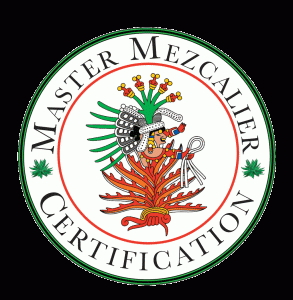OK, I am really behind. I hate when my MBA gets in the way of my PhD. So yes, I have been too busy to put up many posts, so I have some catching up to do. I also owe a strongly positive review to Matt Resler and Empellon here in NYC – the mezcal is strong with that one for sure! That post will be coming.
 But for now, let’s talk about the Master Mezcalier Class that I attended in May. As you may know from prior posts, I was quite psyched to attend this course and start the process toward formal mezcal accreditation.
But for now, let’s talk about the Master Mezcalier Class that I attended in May. As you may know from prior posts, I was quite psyched to attend this course and start the process toward formal mezcal accreditation.
Last August, the governing body for Mezcal (COMERCAM) approved this mezcal course and asked Doug French from Scorpion Mezcal to teach it. So on May 20th, with great enthusiasm and amidst a torrential downpour, I made my way up to El Paso Restaurant at about 110th and Lex. I mention the downpour only because it added to the ambiance of the class. The session was held in sort of a back garden of this restaurant and the roof there is something like corrugated plastic, so for many hours that day the rain was pounding over our heads and Doug virtually had to shout to be heard. As in most things in life, if there is not a bit of adversity, it is not worth doing! It was a bit comical, and we started building the Ark during the breaks.
Overall, it was a great class. There were about 15-20 people there and the discussion was fun and interactive. Here are some good facts, some of which were new to me:
- Mezcal received its Denomination of Origin in 2005, but it was not effective until February of 2005 when the Certification Board was formed. 10 years to grow agave. 10 years to form a Mexican board. Seems right.
- Mezcal can be made in 7 states. Michoacan is an 8th state that has applied for certification and that is likely to be granted in the near future.
- Doug estimates that there are about 200 large-ish distillers in Oaxaca and another 350-400 palenques that also produce mezcal in smaller batches.
- A Tobala pina, on average, weighs about 16 lbs, and it takes two of them to make 1 liter of mezcal.
- Espadin, on other hand, can make 1 liter of mezcal from about half that weight. Espadin’s are much larger and more prolific.
- For aging, the maximum barrel size allowed holds 200 liters.
- The mezcal industry employs about 40,000 people in Oaxaca and that is clearly growing.
- In 2010, 612,000 liters of mezcal were exported, and in 2011, 689,000 liters. That’s a 13% growth rate. Virtually all of that growth is from the artisanal producers (the good stuff that we all drink!).
There was so much more, and that’s a reason for you to catch the next one. We also had the pleasure of tasting many mezcals as well (I probably tried 20), so it is bit more interesting than your standard classroom environment! I got a cocktail book, a book on the history and production of mezcal that Doug has published, a map, and a mezcal tasting wheel (which I definitely need help with).
All in all, this is a highly recommended class! Whether you are looking for an intro to mezcal, or if you already have a good knowledge base and want to build upon it, this class will work for you. Doug and his team (Barbara and Rob) put on a fantastic event that is educational and fun. I look forward to Class 2 (assuming I passed Class 1 – yes there is a test!).


Very interesting!! When is the next class?
Can women attend? Or is it only for macho mezcalieres?
I do not teach it, but I know mezcal to like anyone who likes it back. So yes, you can and should attend!
You can read more about the classes here:
http://www.mezcalier.com
YES, many women come and have a great time as well as learning a LOT about Mezcal.
Next classes coming soon in an area near you.